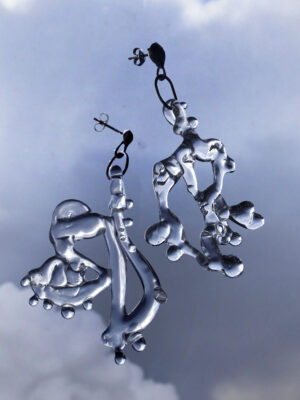Lorena Rode is an interdisciplinary artist whose work ranges from sculptures, wearables, performances to poetry. She grew up moving between Europe, South America, and Africa. Having witnessed many different ecosystems, cultures, values, and relationships, she became deeply drawn to what these diverse forms of coexistence entail. Within her practice, she seeks to redefine our ways of living together, particularly aiming to foster more symbiotic relationships between people, nature, and our environment.
Lorena crafts sculptures, tools, costumes, interventions, and performances, which are often themselves a cluster of materials and stories coexisting, forming hubs of life and inviting unlikely neighbours.
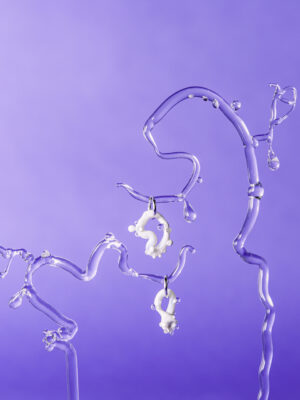
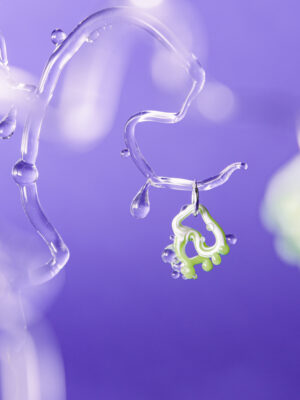
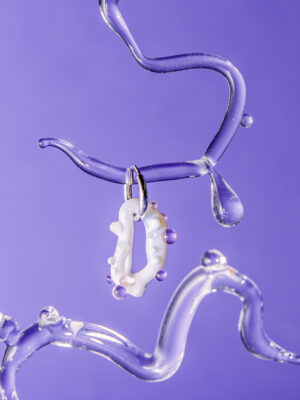
Graduation project Tales of the Extinct is a series of sculptures combined with a poetry book. It aims to build a mourning practice for plants that have become endangered, threatened, or extinct due to our global climate crisis. Lorena focuses on one specific plant species for each country that she lived in, drawing inspiration from their uses and other characteristics to write and craft a parallel version of the plant.
Lorena combines wool, clay, and hand-blown glass pieces to materialise each species. The works and words act as artistic fossils that carry on lost or forgotten legacies. Using handcraft and fable to honour those plant species, representing and re-imagining their intrinsic value, their right to be known, protected, and preserved.
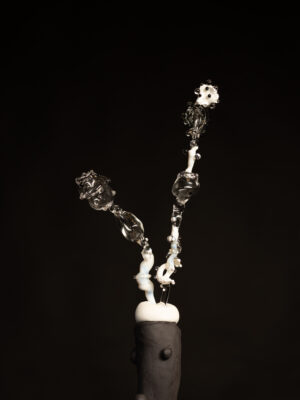
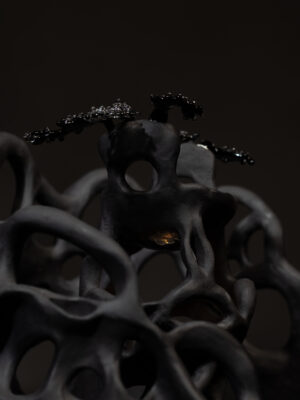
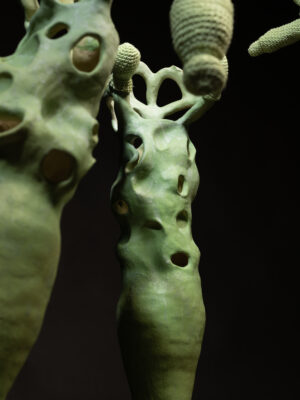
CO: What ideas or themes inspire your work?
LR: My work is inspired by the exploration of interconnectedness and symbiosis across diverse cultures and ecosystems. Because of the way I grew up, I’m fascinated by how communities coexist and interact with each other and with their environments–what they build, use, and value.
I explore these ideas through multimedia creations that combine storytelling, design, and traditional artisanal techniques. I believe all materials that I use carry life. The jewellery that I create establishes a symbiotic relationship with its owner, requiring care and providing adornment in return.
We are pushed to promote ourselves as comprehensible and constant makers. It is important to have a clear, coherent brand, style, or body of work. One theme. One material. One you. (…) But I have realised that there is still so much that I need to explore, so much that I still want to combine, try out, and investigate.
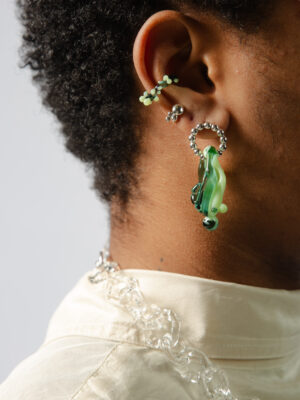

CO: What are the biggest challenges you face in your practice, and how do you plan to address them moving forward?
LR: I often feel that I should focus on a singular aspect of my practice, only develop my sculptures or my performative aspect. That I ought to be some kind of expert. We are pushed to promote ourselves as comprehensible and constant makers. It is important to have a clear, coherent brand, style, or body of work. One theme. One material. One you.
But I have realised that there is still so much that I need to explore, so much that I still want to combine, try out, and investigate. I don’t think this should be seen as a state of infancy or unprofessionalism. I think it is valid, if not very important, to allow ourselves this flexibility.
I want a practice that embraces complexity and the contradictions of life. I hope I can continue to express myself in a less confined way but still have anchor points for people to relate to, regardless of whether it’s through poetry, jewellery, or performance.
Are you a recent graduate with remarkable work to share? Submit your graduation portfolio to veronika@current-obsession.com with the subject line “SO MINT!”
